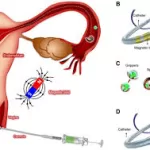As classrooms increasingly shift from traditional pencils to digital devices, educators and parents alike are grappling with the implications of computer-based testing on student learning. While many believe that testing via computers better prepares students for a technology-driven future, recent studies raise important questions about whether this transition might inadvertently hinder fundamental skills, particularly in subjects like English and Math.
The Rise of Computer-Based Testing
The move towards computer-based assessments has been driven by the assumption that integrating technology into education is crucial for future success. However, recent NAPLAN (National Assessment Program – Literacy and Numeracy) results in Australia suggest that this shift may not be without its drawbacks. The data indicates a potential neglect of core academic skills, prompting researchers to investigate the broader impact of this educational trend.
The Cognitive Load of Digital Testing
A comprehensive study involving 43 studies from 18 countries, including Australia, the United States, Germany, and the United Kingdom, provides a deeper understanding of how computer-based testing affects students. The research highlighted the concept of “working memory,” the brain’s temporary storage system where information is held and manipulated during tasks. This system is critical during tests, as students must simultaneously understand questions, formulate answers, and navigate digital platforms.
The study found that younger students with limited computer skills performed better on paper-based tests. This trend diminished with age, but tasks requiring multiple steps led to lower scores in computer-based assessments. The culprit? High cognitive load, akin to an overloaded computer struggling to perform multiple tasks simultaneously. The digital format of the test itself may contribute to this cognitive burden, impacting students’ performance.
Paper vs. Computer: A Mixed Outcome
A 2023 study focusing on Year 9 students vividly demonstrated this phenomenon. When tackling simple questions, students scored about 7% higher on computer-based tests. However, for more complex questions, their scores improved by approximately 12% on paper-based assessments. This raises a crucial question: how can we bridge this gap?
The study further assessed the working memory capacity of these students by asking them to remember increasingly longer lists of numbers. When researchers controlled for working memory capacity statistically, they discovered no difference in test scores between paper and computer formats. This finding suggests that students with lower working memory capacities may be at a disadvantage in computer-based tests, a concern that is particularly relevant for students diagnosed with attention-deficit hyperactivity disorder (ADHD), who often struggle with working memory.
Reimagining Digital Testing
So, should computers be abandoned in the classroom? Certainly not. Technology plays an indispensable role in modern education, but it’s clear that taking a test on a computer is a different experience compared to paper-based testing. To optimize student performance, schools can consider a few adjustments.
Providing extra time for complex tasks on computers could help students manage their cognitive load more effectively. Early training in word processing and computer navigation skills can also build the necessary competencies to excel in digital tests. Moreover, minimizing digital distractions during tests, such as pop-ups, multiple tabs, and online games, can create a more focused and productive environment.
Parents can also contribute by encouraging their children to use computers for everyday tasks, such as typing emails or shopping lists. This practice can enhance their comfort and confidence with digital devices, better preparing them for computer-based assessments.
Conclusion: A Balanced Approach to Education
As we continue to embrace technology in education, it’s crucial to ensure that its incorporation does not hinder student performance or exacerbate achievement gaps. The key is to find a balance—preparing students for a digital future while ensuring they master essential academic skills. By fostering a learning environment that nurtures both technological literacy and fundamental knowledge, we can help students remain enthusiastic, capable learners in an increasingly digital world.











